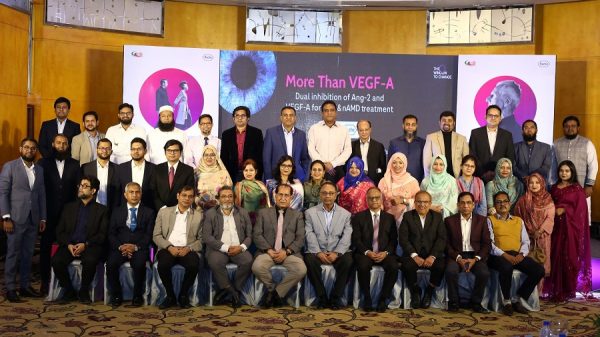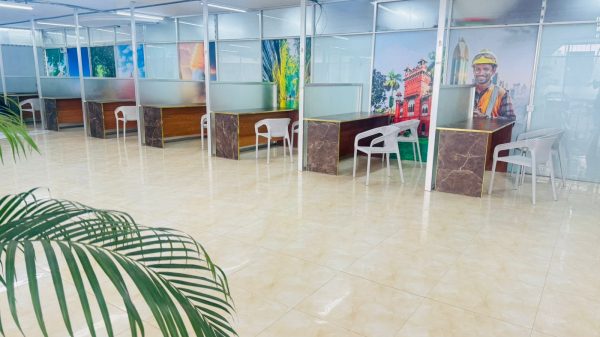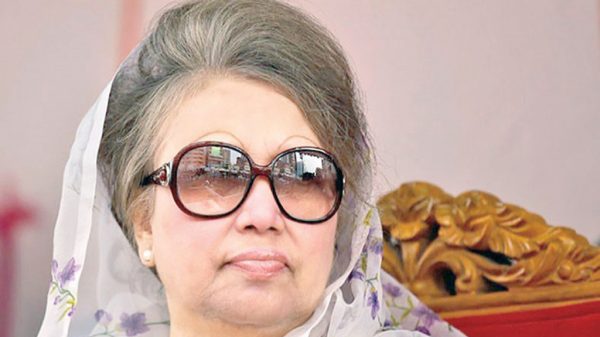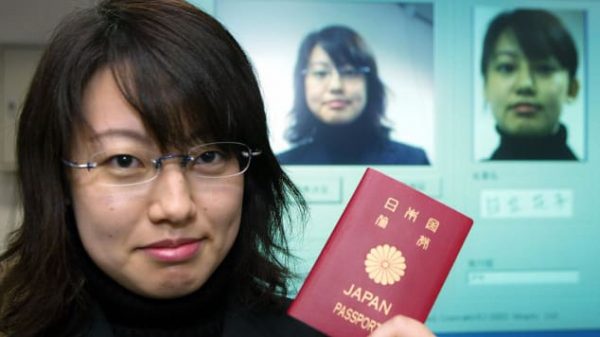New hope in eye treatment for diabetic patients

Shawdesh desk;
Diabetes related complexities have taken a serious turn in the country as many diseases especially eye-related problems of the diabetic patients have increased here in last few years.
According to the report of the International Diabetes Federation, about 1 crore and 31 lakh people are suffering from diabetes in Bangladesh.
At the same time, the retinal damage is found in about 33 per cent of the diabetic patients as many patients have vision loss and eventually go permanently blind if they are not treated at the right time.
Experts said the number of patients with diabetic macular edema (DME) is also increasing due to the growing population and rising number of diabetic patients.
Additionally, the number of people with age-related macular degeneration (AMD) is rising. Patients, families, and society all face an adverse impact due to this growing burden, they added.
The experts further said although there are few options for this disease’s therapy, it is not widely accessible. However, permanent blindness can be averted with the right care.
Prof Dr. Rishi Paul Singh, a staff physician at Cleveland Clinic in Florida, United States speaking at a scientific symposium described elaborately about the diabetes related eye related problems.
He said for individuals with DME and AMD, he discussed treatment options, recently developed medications, and scientific data.
The scientific symposium was oragnised jointly by Bangladesh Vitreo-Retina Society and Roche Bangladesh at a city hotel on Friday.
More than half a hundred renowned ophthalmologists from the country participated in this conference.
Dr. Niaz Abdur Rahman, Consultant Vitreo-Retinal Surgeon at Bangladesh Eye Hospital and President of the Bangladesh Vitreo-Retinal Society, delivered a presentation on DME and AMD treatment in Bangladesh.
Mentioning that the number of patients coming to them with DME and AMD is increasing, Dr. Niaz Abdur Rahman said Roche, a Swiss biotech company, has invented a breakthrough therapy that will make treating people with this condition easier.
“It is possible to protect these patients from permanent blindness. But to make its treatment accessible, everyone needs to work together. The government needs to initiate special initiatives,” he said.
This new scientific discovery is the first and only drug that will act as both angiopoietin-2 and VEGF-A. Enpoietin-2 and VEGF-A are key inducers of retinal vascular disease.
Clinical trials have shown that this ophthalmic treatment can extend the interval between drug doses up to four months. As a result, it is possible to significantly reduce the patient’s hospital travel and associated costs and bring about a qualitative change in the patient’s life.
It will also reduce patient pressure in hospitals, increasing the opportunities for doctors to serve more patients.
A welcome speech was delivered on the occasion by Dr. Tariq Reza Ali, Associate Professor in the Department of Ophthalmology at Bangabandhu Sheikh Mujib Medical University and Secretary General of the Bangladesh Vitreo-Retinal Society and Ophthalmological Society of Bangladesh.
In his welcome speech, he emphasized the Vitreo-Retinal Society’s efforts to ensure the care of DME patients in Bangladesh.
In the concluding speech, Dr. Mohammad Afroz Jalil, Managing Director of Roche Bangladesh said, the contribution of the experts in reducing the rate of blindness in Bangladesh is undeniable.
This progress must be sustained if the Sustainable Development Goals are to be achieved, so prevention and appropriate screening programs must be strengthened to meet the future burden of DME.























Leave a Reply